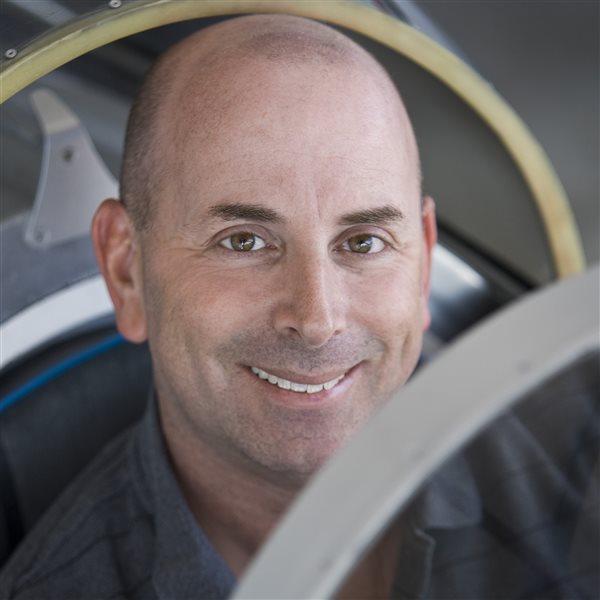Solo Citation flying
Absence makes the heart grow fonder

The steady cadence of the steps taken during takeoff, climb, following by rapid-fire commands from East Coast controllers, and running checklists as the jet breaks free of the clouds and accelerates into the cobalt flight levels is familiar and comforting. My hands and eyes automatically find the knobs, switches, and digital information I seek, and the process follows a predictable and almost rhythmic flow.
But then it’s time to level off in high-altitude cruise, and this low-workload period is oddly unsettling. Straight and level, autopilot engaged at 34,000 feet with no immediate tasks to perform should be relaxing but feels vaguely lonely.
The terrain is too distant, and even the familiar chatter on the air traffic control frequencies sounds weirdly abstract, even though the ride reports and requests for shortcuts from other pilots are standard fare. This is the first time I’ve ever been alone in the cockpit of a Cessna Citation—or any corporate jet—as a solo pilot, and the nagging feeling that I’ve overlooked something important returns again and again.
I’ve always felt drawn to single-seat airplanes and felt at ease in them. And my initial Citation training was as a single pilot, so by all rights I ought to be happier by myself. But I’m definitely not.
Until now, all my Citation flying has been as part of a crew, and I’ve been incredibly fortunate to have supremely skilled, highly experienced, and laudably patient teachers to help me learn. Eventually, I became a mentor pilot, too, and assisting new Citation pilots from the right seat felt like a natural and logical progression. As a veteran flight instructor, supporting pilots in the left seat, answering their questions, and boosting their confidence are things I know how to do.
On this summer evening, however, the Citation is bucking a 60-knot headwind, and the hour and a half of cruising flight on the way to my destination in northern Michigan seems interminable.
It’s about dinner time, but I’m not hungry. This airplane is equipped with satellite music, but I leave it off out of concern that I’ll miss an ATC call. This is my second flight in this particular airplane, and my ears aren’t yet trained to pick out its N number from the background babble.
I’m cleared direct to my destination more than 300 nautical miles away, and the shortcut takes me across a well-traversed chunk of Canada. The Toronto controller’s accent is in keeping with all the other details on this flight, because it’s all slightly foreign.
The sun is beginning to set, so I turn up the cockpit heat (the outside air temp is negative 65 degrees C) and notice a faint odor. I dig out the abnormal checklist, which calls for donning the oxygen mask and turning off the air conditioning, and decide to do the second part only. I turn off the air conditioning and the mild odor slowly dissipates. Or perhaps I just get accustomed to it and stop noticing. Anyway, it seems more like a remnant of misapplied cleaning solution than smoke from a fire. Secretly, I’m glad for the distraction because it gives me something purposeful to ponder for a few minutes to fill the time.
Finally, it’s time to descend.
The air is smooth, and I mimic my mentor, Luz Beattie, by keeping the jet’s airspeed right up against redline on the way down. When I go too fast and the warning chimes, I can almost hear her laughingly call out, “Coffee’s ready.” Oops.
The error relaxes me, and so do the flight conditions at the destination, which are much better than forecast: A golden twilight, empty traffic pattern, and light winds favoring a long, wide runway.
The next few days include several more flights as a lone Citation pilot, and they go remarkably well in a variety of weather conditions.
The main takeaways are things more experienced pilots have always counseled: Don’t rush. Think things through. Anticipate. Check and doublecheck.
Until now, all the dual flight instruction I’ve ever received was preparation to perform those same tasks alone in the next phase—and the steepest part of the learning curve always took place after the instructor had left the airplane. That’s when the instructor’s lesson became real and internalized. The best instructors welcome and prepare for that necessary step. As a student, I always looked forward to taking the solo plunge and the slightly overwhelming feeling that comes with swimming alone in the deep end of the pool, but single-pilot corporate jet flying seems different.
Being alone in the cockpit makes me miss having another aviator to use as a resource, a backstop, or a sounding board. Solo jet flying makes me appreciate the examples other pilots have set for me, and the opportunities they’ve opened up. I most assuredly look forward to sharing the cockpit with them again.



